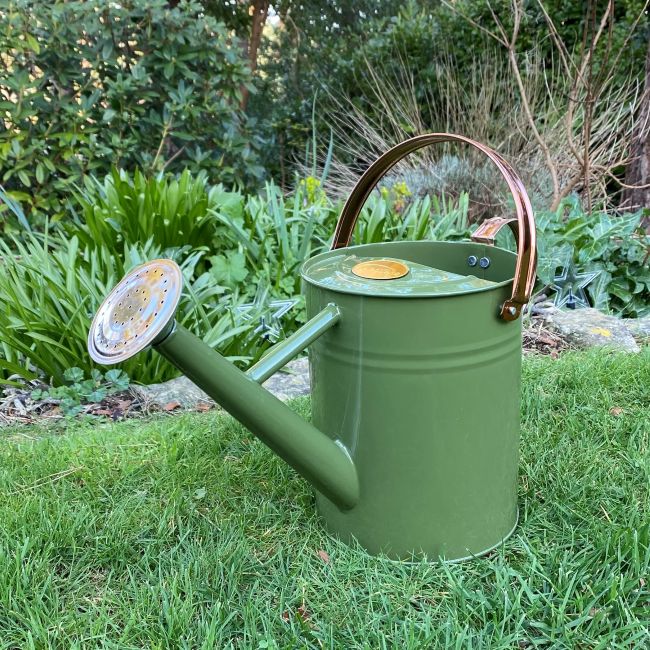
Planning Your Veg Garden in a Changing Climate
I know, the idea of planning your patch properly doesn’t exactly stir the soul, but I’m afraid to grow organic veg effectively, it really is essential. The main purpose of planning is simple: to make sure you don’t keep planting the same crop in the same spot, year after year. No great artistry is required here – just a little thought and record-keeping.
At the heart of this approach is a system called crop rotation. This helps reduce the risk of diseases and conditions such as Potato Blight and Club Root, which can linger in the soil for up to seven years if encouraged. Crop rotation also balances out soil fertility, since some crops are much hungrier for nutrients than others. By giving the soil a chance to recover, you’ll keep your patch productive for years to come.
If you have the space, it’s also a good idea to include a ‘green manure’ crop as part of your rotation. Plants such as Clover, Alfalfa, Bitter Blue Lupins, Trefoil, Vetches, Fenugreek and Phacelia Tanacetifolia can be sown and later dug or rotovated back into the soil. They not only improve soil structure but also fix nitrogen and add valuable organic matter for the following crops. Most seed suppliers stock a good selection of green manures, so they’re easy to get hold of.
Another benefit of rotating crops is that some plants actually thrive when they follow certain others – though this can get quite technical. Keeping records of what you grow, and where, allows you to experiment with varieties too. Over time you’ll discover which ones taste best, perform well in your soil, and stand up to the ever more variable weather conditions that gardeners are facing.
Climate Change and Year-Round Growing
One of the most noticeable shifts in recent years has been the lengthening of the growing season, particularly in autumn and winter. Climate change, while challenging in many respects, has made it possible for gardeners in the UK to grow a wider range of winter crops, especially winter salads.
Where once the winter veg garden was limited mainly to hardy brassicas and root crops, we can now successfully grow salad varieties such as mizuna, mustards, rocket, corn salad (lamb’s lettuce), claytonia (miners’ lettuce), winter purslane, and even some lettuces bred for cold tolerance. These crops, sown in late summer and early autumn, will keep producing fresh leaves well into winter – and often bounce back in early spring.
Milder winters also open the door for experimenting with overwintering broad beans, garlic, onions, and early carrots, which benefit from getting established before the depths of winter. Cold frames, cloches, and small polytunnels make this even more reliable, but in many regions it is now possible to harvest fresh salads and greens outdoors in December and January – something our grandparents would have struggled to do.
When to Plan Your Veg Garden
Traditionally, gardeners have sat down in January, after Christmas, to plan the next year’s crops. The quiet winter months by the fire are still a perfect time to sketch out rotations, order seeds, and reflect on what worked well.
But with the wider choice of winter crops now possible thanks to climate change, it also makes sense to do a second round of planning in mid-summer. This allows you to prepare beds and sow seeds for autumn and winter harvests – making the most of the longer season and keeping your garden productive almost year-round.
Sample Sowing Guide for Winter Salads (UK conditions)
Here’s a quick guide to help with your mid-summer planning:
July
- Mizuna
- Mustard Greens (Red/Green varieties)
- Rocket (arugula)
- Winter Lettuce (hardy types such as ‘Winter Density’)
August
- Corn Salad (Lamb’s Lettuce)
- Claytonia (Miner’s Lettuce)
- Winter Purslane
- Oriental Greens (Tatsoi, Pak Choi – early sowings for baby leaves)
September
- Hardy Lettuce (under cloche or cold frame)
- Spinach (winter-hardy types)
- Chard (will overwinter and crop again in spring)
- More Corn Salad for staggered harvests
October (in mild areas / under protection)
- Final sowings of rocket, corn salad, and mizuna for overwintering under fleece or cloche
With a little protection, these crops will give you a steady supply of fresh leaves through the darker months, when shop-bought salad is often imported, expensive, and lacking in flavour.
Making Planning Part of the Fun
A great way to involve children in the process is by taking photos of your plot throughout the year. These will be invaluable when you sit down by the fire in January to plan the year ahead. They’re especially handy if last year’s plan got misplaced, used as a doodle pad, or never quite made it onto paper in the first place.
Planning also helps you be realistic: how many potatoes will your family actually eat in a year? How much time can you give to weeding or harvesting? It’s better to grow a smaller area well than to overreach and let crops go to waste.
So how do you get started? Simply measure your plot – with a tape or by pacing it out – and sketch it on paper. Draw in the rows, note which crops went where, and don’t forget the varieties. If your drawing skills aren’t up to much, your photos will fill in the gaps.And while you’re sketching, think about spacing. Did you plant your rows too close together last year and end up tiptoeing through them? Allowing a bit more room will make hoeing, weeding, and harvesting far easier – and you might even persuade the kids or your less-keen other half to lend a hand.





















